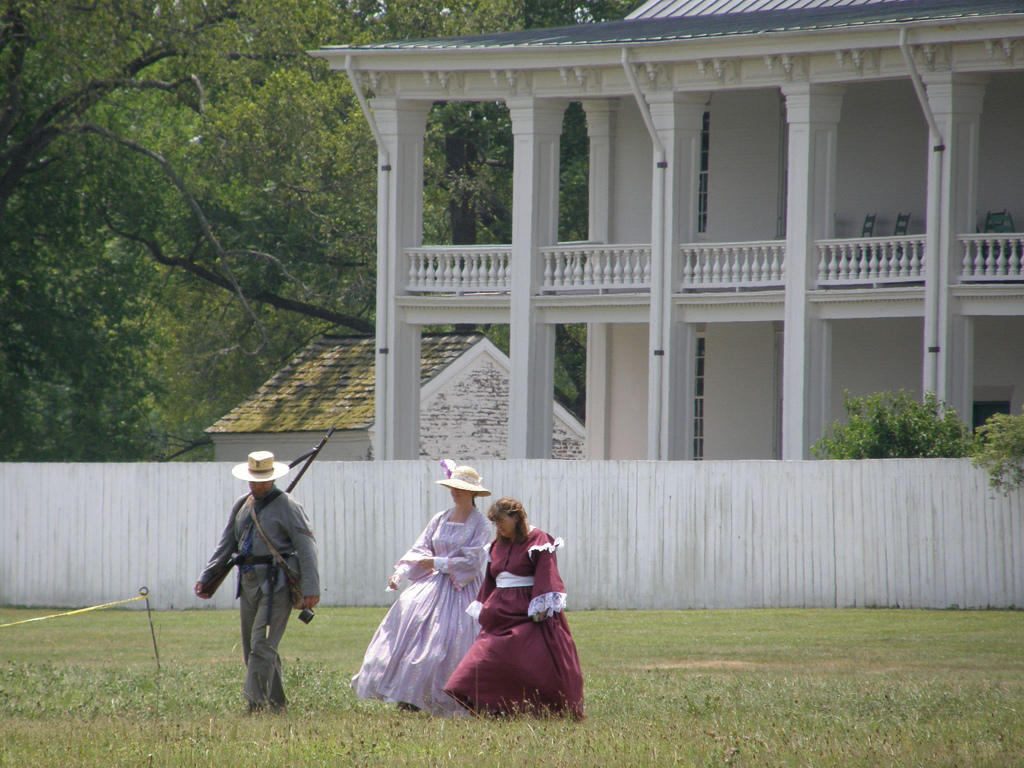Nestled in the heart of Franklin, Tennessee, Carnton stands as one of the most iconic Civil War-era homes in the American South. Originally built in 1826 by Randal McGavock, an influential Nashville mayor and prominent planter, the Carnton Plantation has borne witness to tragedy, resilience, and enduring legacy. Today, the home tells powerful stories of war, loss, and Southern history, attracting thousands of visitors annually.
A Southern Legacy: The McGavock Family and Antebellum Life
The McGavock family, originally of Irish descent, was among the wealthiest landowners in Tennessee by the mid-1800s. Randal McGavock, who constructed Carnton, oversaw a vast plantation economy based on enslaved labor. The estate covered over 1,400 acres and produced crops like corn, wheat, and cotton. His son, John McGavock, inherited the property in the 1840s and managed its growth while serving as a public servant and agricultural innovator.
Life at Carnton before the war reflected both the elegance and moral complexity of the Old South. The Greek Revival-style home, with its two-story veranda and hand-crafted furnishings, symbolized prosperity, but also stood atop the suffering of the dozens of enslaved people who kept the estate running. Understanding this duality is essential to understanding the full history of Carnton.
From Plantation to Battlefield Hospital
The Civil War dramatically reshaped life across the South, and Carnton found itself in the direct path of one of its bloodiest chapters. As Union and Confederate forces clashed for control of Middle Tennessee, Franklin became the site of a decisive conflict. On November 30, 1864, the Battle of Franklin erupted, bringing over 20,000 soldiers into brutal, close-range combat.
Carnton’s strategic location—just south of the Franklin town square—made it a natural choice for a Confederate field hospital. As the battle raged into the evening, the home became a sanctuary for the wounded. Carrie McGavock, wife of John McGavock, played a vital role in tending to the injured and dying soldiers who flooded the house. The upstairs bedrooms were quickly converted into operating rooms, and the floors still bear the dark stains of blood soaked into the wood more than 150 years ago.
Carnton’s transformation from stately home to makeshift hospital was not unique in the Civil War, but the scale and brutality of what happened there make it particularly noteworthy. By nightfall, the house was overflowing with suffering men—many with life-threatening injuries and few medical resources. Carrie McGavock was later immortalized as the “Widow of the South,” a figure of stoic compassion during unimaginable horror.
The Battle of Franklin: A Turning Point
The Battle of Franklin was one of the fiercest and most tragic of the Civil War. In just five hours, over 9,500 soldiers were killed, wounded, captured, or reported missing. The Confederate Army of Tennessee, led by General John Bell Hood, launched a direct assault on fortified Union positions under General John Schofield. The result was devastating: six Confederate generals were killed or mortally wounded, and the Army of Tennessee never recovered its strength.
Carnton was not just a backdrop to the battle—it was part of the action. The home’s porches were lined with the wounded, and its interior was filled with groans, cries, and chaos. Family letters and wartime records document the emotional toll on the McGavock family and the soldiers they aided. Their experience reflects the often-overlooked civilian cost of war.
The McGavock Confederate Cemetery
After the war, hundreds of Confederate soldiers remained buried in shallow, makeshift graves across the battlefield. In response, the McGavocks donated two acres of their land to establish what became the McGavock Confederate Cemetery in 1866. With meticulous recordkeeping and help from other local families, nearly 1,500 soldiers were reinterred in marked plots organized by their states of origin.
Today, the cemetery stands as the largest privately owned military burial ground in the United States. Walking through its rows offers a somber reminder of the scale of loss that took place in Franklin. Carrie McGavock personally maintained the records and preservation of the cemetery until her death in 1905, further solidifying her legacy as a guardian of memory.
You can learn more about the cemetery and its preservation through the Battle of Franklin Trust, which oversees its care today.
Enslaved Lives at Carnton
While much attention is paid to Carnton’s Civil War role, it’s equally important to acknowledge the enslaved African Americans who lived and worked on the plantation before emancipation. Historical records indicate that dozens of enslaved men, women, and children served the McGavock family, performing agricultural labor, domestic duties, and skilled trades.
The Battle of Franklin Trust has made concerted efforts in recent years to research and share the stories of these individuals. Their lives were integral to the estate’s operation, and their erasure from earlier narratives reflects broader trends in Southern historical interpretation. Efforts to uncover and honor their contributions continue through archaeological studies, oral histories, and community engagement.
Visit Carnton Today
Today, Carnton is operated as a museum and heritage site under the stewardship of the Battle of Franklin Trust. Visitors can tour the home, its restored gardens, the cemetery, and outbuildings, gaining a holistic understanding of 19th-century Southern life and the site’s wartime role.
Guided tours of Carnton offer an emotional and educational journey through time. Tour guides share in-depth stories about the McGavock family, the enslaved people who lived there, and the soldiers who fought and died on the surrounding grounds. Interpretive exhibits, period furnishings, and blood-stained floorboards give visitors a visceral sense of history.
For those planning a visit, Carnton is open year-round, and tickets can be bundled with other local sites like the Carter House and Rippa Villa. These three homes together form a triangle of Civil War memory in Middle Tennessee.
Why Carnton Still Matters
Carnton’s story is more than just a footnote in Civil War history—it’s a lens through which we can explore themes of war, memory, resilience, and the American experience. Its layered history includes tragedy and heroism, wealth and inequality, and a community’s ongoing effort to reconcile its past with its present.
As Americans continue to wrestle with how we remember our history, sites like Carnton offer a vital space for reflection. Whether you’re a history buff, a genealogist, a student, or simply a curious traveler, Carnton invites you to step back into a defining chapter of the nation’s story.

